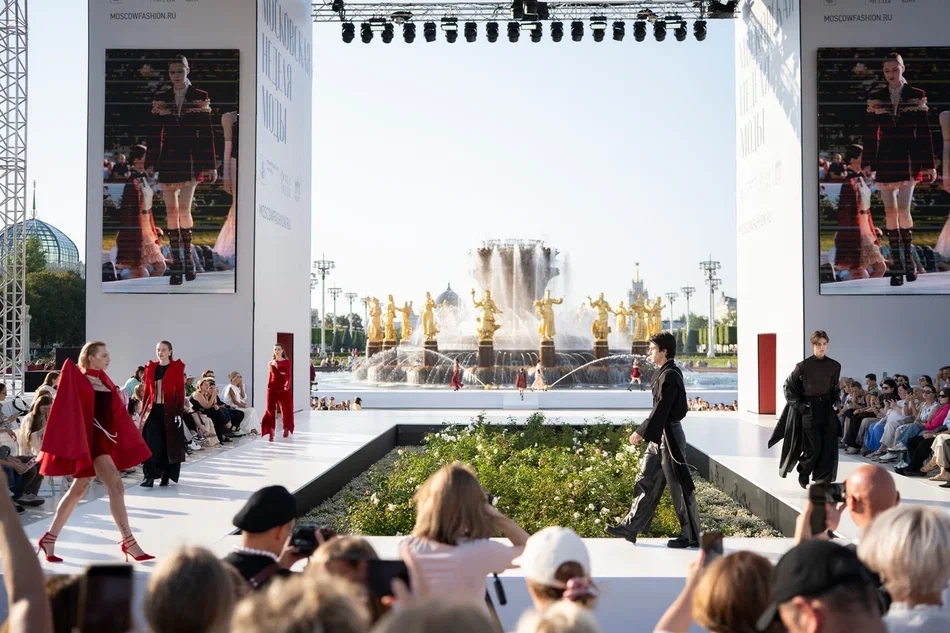This August, I saw something in Moscow I’ll probably never forget. Fashion weeks usually feel like they happen in their own little bubbles — the same white halls, the same front-row faces, the same stage lighting. But this one broke free of all that. The city itself became the stage. Bridges, squares, and even museums opened their doors. Moscow didn’t just host fashion week — it wore it.

A Bold Summer Shift
Choosing August was a clever gamble. Moscow in late summer has this golden glow — the evenings are long, the air is soft, and the light makes everything look a little magical. It gave fashion room to breathe outdoors. The Floating Bridge at Zaryadye Park became a runway in the sky; the Kitaygorodskaya Wall carried centuries of drama in its stones; VDNKh added its own Soviet grandeur. But what really took me by surprise were the museums — the Pushkin Museum of Fine Arts and even the Leo Tolstoy Museum. Seeing models glide past masterpieces and literary relics felt surreal, as though history and high fashion were suddenly in conversation.

Fashion as Performance
Outdoors, the clothes came alive in ways you don’t see inside a hall. Fabrics caught the light differently, silhouettes shifted with the shadows, and sometimes the evening breeze stole the spotlight. At Zaryadye, gauzy gowns floated as if they were designed for dusk. In the museums, structured tailoring carried a new kind of gravity, framed by paintings, sculptures, and the quiet weight of culture. These weren’t just fashion shows — they felt like theatre, staged across the city.

Russia’s Creative Confidence
More than 220 brands showed collections, but it was the Russian designers who stood out. Embroidery, folklore-inspired motifs, reworked Slavic textiles — the city’s heritage was right there, stitched proudly into the clothes. Against the backdrop of Moscow’s walls, bridges, and museums, it felt like designers were speaking not just through fashion, but through history, saying: this is ours, this is who we are, and this is where we’re heading.

Fashion For Everyone
What I loved most was how open it all felt. Fashion weeks are often about velvet ropes and invitations, but here, you could stumble across a show by chance. Tourists paused on bridges, locals stopped on their evening walks, and suddenly couture became part of their night. Social feeds filled with glimpses where city life and high fashion blurred together. It reminded me why fashion matters: because it’s not just about exclusivity, it’s about imagination and belonging.

Moscow’s New Rhythm
By moving fashion week to August, Moscow carved out its own rhythm. It didn’t fight for space on the global calendar; it chose its own season, its own mood, its own light. And it worked. It felt confident, unhurried, and unmistakably Moscow.

When the final show ended and the city slipped back into its usual pace, I kept thinking: this wasn’t just fashion week. It was a love letter to Moscow — written in fabric, movement, and space.
In August 2025, the city didn’t just host fashion week. It lived it.
— Nashmia Butt, Editor-in-Chief, Grazia Pakistan

